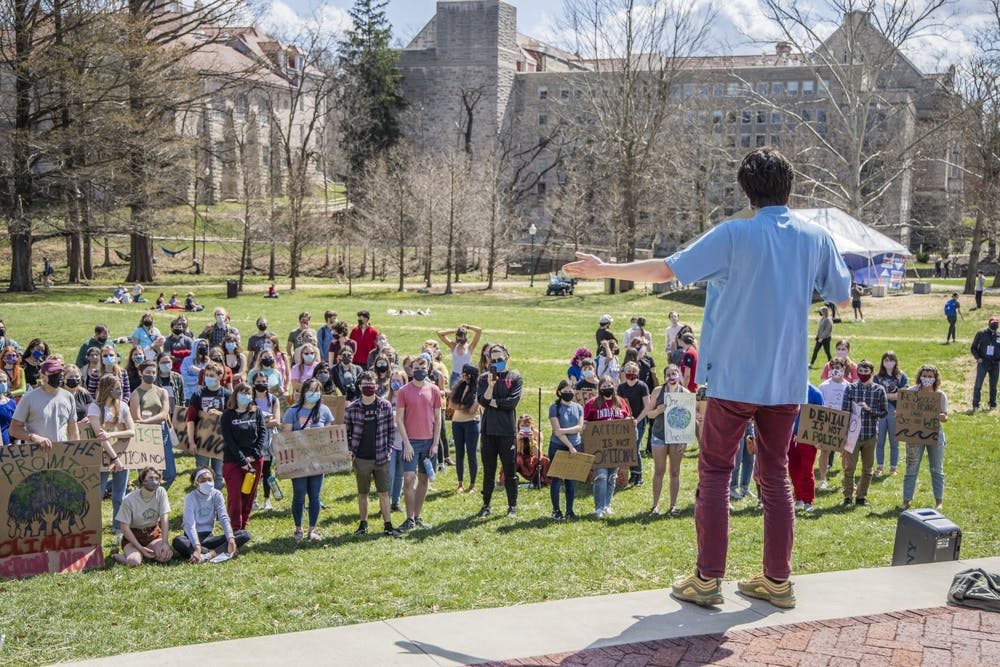The Bloomington City Council approved the city’s climate action plan 9-0 during its meeting Wednesday.
The city’s climate action plan creates a series of carbon emission reduction targets and initiatives to hit those targets.
In Mayor John Hamilton’s state of the city address earlier this year, he said his administration’s climate action plan was a priority for the city’s future.
The plan’s major goal is to decrease the city’s greenhouse gas emissions by 25% from its 2018 levels by 2030, according to documents released by the city. By 2050, the city wants to reach carbon neutrality.
Between 2008 and 2018, the city has seen a 16% decrease in greenhouse emissions, Lauren Travis, project manager for the plan, said. Travis said the decrease was a step in the right direction, but carbon emission rates need to decrease more for the city to reach its goal.
The plan sets out a strategy to achieve more than 25 benchmark goals. For example, the city wants to decrease the miles traveled by cars on Bloomington roads by 8% of its 2018 levels. To achieve this goal, the city will consider steps such as establishing car-free pedestrian zones.
Last year, the city created a pilot pedestrian zone for dining on Kirkwood Avenue, which returned this March. According to the plan, the city is going to use the observations from that pilot program to implement future car-free zones.
“I think it's fantastic that Bloomington has put this climate action plan together,” Bloomington resident Dave Warren said. “I think pretty much everything in this document is needed and laudable.”
Warren said the city should have considered that home prices may rise in the future, causing residents to move out of Bloomington to other areas of the county outside the city limits. Those residents would likely need cars to get to their jobs in the city, raising carbon emissions.
“There's an almost total reliance on cars and so per capita carbon emissions in those jurisdictions are much higher,” Warren said.
He said one method of solving the problem of people moving out of the city would be to build additional homes in Bloomington, so housing costs would be more manageable.
“If the city doesn't make it a little easier to add more homes so that more people can afford to live in this climate-aware city, the city is essentially exporting some of those carbon emissions to other jurisdictions,” Warren said.




